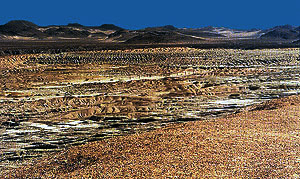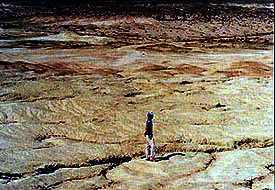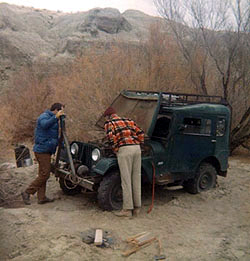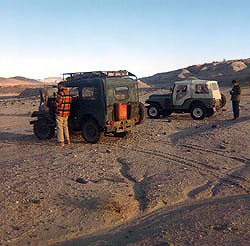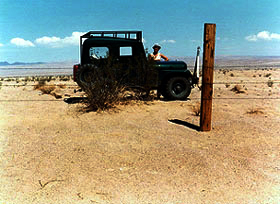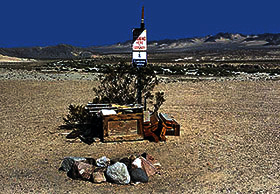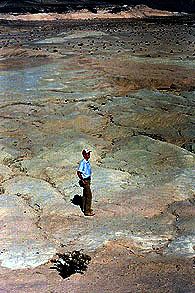 |
| Click on
the image for a larger view. The individual is standing just
downslope from Bassett Point (the view is roughly southeastward)
amidst the sediments of the Upper Pleistocene Manix Formation;
abundant, beautifully preserved skeletal elements from the Tui
Mojave Chub, in addition to many kinds of fresh water mollusks,
typically weather out of this interval in the Manix Formation;
mammal and bird remains are rarer finds, but quite rewarding
ones. Of course, the Manix Formation has recently been designated
an Area of Critical Environmental Concern by the Bureau of Land
Management--so, don't remove anything you find in the Manix Formation
these days unless you have a special use permit from the BLM. |
|


